Homer’s Odyssey, translated by T. E. Lawrence, designed by Bruce Rogers, printed by Emery Walker, and published in 1932 was an aesthetically magnificent book and a highly regarded translation. We could fumble with our own gushing words, but best to defer to American printer and publisher, typographer, and book historian Joseph Blumenthal, who called the work “indisputably amongst the most beautiful books ever produced… a work of genius…” produced “without tricks or accessory decoration, with a classic austerity akin to the timeless proportions of the Parthenon, with only type and paper and ink, with consummate skill…”
Only 530 copies of this masterpiece were produced. In the past year, we’ve had the freakish good fortune to be graced with two splendid copies connected to two of its makers. Our first bit of luck came when we acquired Bruce Rogers’s personal copy, inscribed by him to a noted collector and accompanied by the original publisher’s prospectus, an original order form, and an autograph note initialed by Rogers about the ink. Lightning struck again just weeks ago when a longtime client surprised us by entrusting us with yet another splendid copy, this one retaining the original slipcase, accompanied by the original prospectus, and inscribed by Emery Walker just three months before his death.
Ultimately, there will be just two new stewards for these, so, as they find their way to other shelves, we’re going to use this post to share. And, well, yes, maybe gush a little in our own words.
First the makers.
Bruce Rogers (1870-1957) was one of the most distinguished typographers and book designers of his time. In the 1920s, Rogers had a self-described “wish to print an Odyssey”. The problem was that “the available translations had already been produced in so many various forms that a new version seemed desirable if a suitable translator could be found.“ Inspired by reading Seven Pillars of Wisdom, Bruce Rogers persuaded T. E. Lawrence “of Arabia” to undertake a new translation.
Thomas Edward Lawrence (1888-1935) achieved fame from his own remarkable odyssey as instigator, organizer, hero, and tragic figure of the Arab revolt against the Ottoman Empire during the First World War, which he began as an eccentric junior intelligence officer and ended as “Lawrence of Arabia.” However, Lawrence’s literary and intellectual reach far exceeded the world and words of Seven Pillars of Wisdom. The man Winston Churchill praised as having “a full measure of the versatility of genius” was an Oxford-educated solider-scholar-savant and proved an inspired choice for translator.
Rogers and Lawrence found reciprocal inspiration in one another’s involvement. Lawrence protested “There will be no interest in the book except as typography: that is as it should be, for it will be superbly printed… No one is ever likely to ask who was your scribe.” For his part, Rogers expressed a sense of rising to the occasion of Lawrence’s translation: “For one of the world’s classics in a new translation by one of the most noted Englishmen of his time, I thought a somewhat ‘monumental’ volume was called for.”
Having settled on the partnership, Rogers and Lawrence needed a printer worthy of their ambition. Rogers would design the book and Lawrence provide the translation. It owes its physical existence to the printer, Sir Emery Walker (1851-1933). “Emery Walker, friend of William Morris and co-proprietor of the Doves Press, had been one of the outstanding printers of the private press movement. Now in his last years, he continued to help Wilfred Merton, his successor at Emery Walker Ltd, until his health failed. The Bruce Rogers Odyssey was his final major achievement and by no means the least.”
Rogers and Lawrence sought Walker intentionally, with a clear sense of both the significance of their tripartite collaboration and the suitability of Walker’s participation. On 3 September 1928, the project still nascent, Rogers wrote to Lawrence: “Walker is now over 75 (though almost as vigorous as ever) and it would be a great pleasure to him to have his name on one more important book, before he stops printing for good – and in my eyes this will be the most important…”
What they created.
It has been axiomatically observed that it requires a lot of work to make something complex look simple. The “simple” and spare elegance of the Bruce Rogers / T. E. Lawrence / Emery Walker Odyssey is a par excellence exemplar of the axiom. The edition is unpretentiously beautiful, bound in unadorned full black Niger Morocco and printed on grey, handmade, watermarked paper with gilt top edge and untrimmed fore and bottom edges. From the paper selection, to type invention, to ink formulation, to painstaking illustration, the work is a showcase for book designer Bruce Rogers’s exacting genius.
The rondel illustrations heading each Book (26 in all) were “designs from Greek vases in black on gold leaf” though “only a few of the original compositions were followed at all closely; the others were made up from single Homeric figures in new combinations, illustrating some incident in each Book.” Once he settled on the rondels, it took Rogers “several months of experimenting… in producing the effects desired and making sure that the work was permanent.” In the end, Rogers conceived an elaborate, multi-stage process – “seven operations in all” – and “a specially thick gold was beaten out for the job.” Great pains were also taken with the paper. Rogers “had a low-toned paper made at the J. Marcham Green mill” featuring “a special watermark of a Greek galley” and a “slightly grey tone” which “held up the gold-and-black rondels better than a white or cream tint would have done.”
The text was printed in Rogers’s own “Centaur” type, which had brought Rogers “much prestigious attention and opened all sorts of professional doors for him.” Rogers’s attentive intentionality extended even to the ink; “I had an ink made from an old formula I found in Savage’s Decorative Printing, which called for balsam of copaiba instead of varnish. It was somewhat slow in drying but has still a pleasing spicy aroma, on which many people have commented when opening the book.”
Of course, Rogers’s conception had to rest on the firm foundation of an important and enduring translation. It does. T. E. Lawrence’s own singular life odyssey proved an inspired choice for translator. “Lawrence’s translation has been continuously in print” for nearly a century now. “By that yardstick it is second only to Seven Pillars of Wisdom among his literary achievements.”
Lawrence’s and Rogers’s Odyssey was one of the last major works printed by Emery Walker Ltd. while he was still actively involved in the company. In 1888, the year of Lawrence’s birth, it was Walker who inspired William Morris to found the Kelmscott Press. Morris in turn had inspired both Lawrence and Bruce Rogers to become interested in fine printing. In a sense, their magnificent 1932 Odyssey brought the story full circle. For Lawrence, Rogers and Walker were living legends.
This explains why it has been such a singular privilege to have two such important copies of this work in the span of a single year.
Bruce Rogers’s copy.
Imagine receiving a magnificently well-preserved copy of the Bruce Rogers Odyssey, but not just a copy, his copy. Imagine lifting the cover to find the personal bookplate of Bruce Rogers on the front pastedown. Imagine lifting and turning the front free endpaper to find Rogers’s inscription and signature, gifting this copy to an ardent admirer.
Rogers’s distinctive personal bookplate herein features a winged faun bearing a scythe with an “INDIANA” banner (homage to his Indiana roots) wrapped around the haft and “BRUCE ROGERS” printed at the foot.
The recto of the blank preceding the title page is inscribed and signed by Rogers in three lines in blue ink: “Inscribed with pleasure, for | Victor H. Borsodi | Bruce Rogers” with a flourish between Borsodi’s name and Rogers’s signature. Affixed to the lower front pastedown, below Rogers’s bookplate, is the only other previous ownership mark – Borsodi’s own bookplate, printed “V. H. B.” within a decorative border.
Fittingly, this copy is in lovely, near fine condition, and it came to us accompanied by three additional items of note. First is the original publisher’s prospectus, an elusive and collectible item on its own merits. Second is an original publisher’s order form, complete. Third is a small autograph note from Rogers, initialed by him, about the famous ink of this edition. The note quotes and cites Rogers’s description of how he formulated the ink from “Paragraphs on Printing page 150”. This citation by Rogers is significant; the cited book was first published in 1943, allowing us to speculate with some confidence that Rogers gifted this personal copy to the recipient sometime between 1943 and Rogers’s death in 1957.
The recipient of this magnificent gift from Bruce Rogers, Victor Howard Borsodi, Jr. (1915-1986), was a New York City bibliophile whose collecting interest centered on the work of Bruce Rogers. A collection of Borsodi’s Bruce Rogers material is now held by The Grolier Club of New York.
Emery Walker’s birthday gift to Violet Woodhouse.
Bruce Rogers’s copy of the Bruce Rogers Odyssey came to us in December 2024. Then, in October 2025, came more Homeric lightning.
Just a few weeks ago we were entrusted with another lovely copy, this one housed in the original slipcase and also accompanied by the original publisher’s prospectus. That would be cause enough for enthusiasm. But this is a printer’s presentation copy, warmly inscribed by Emery Walker as a birthday gift to the renowned musician and cultural figure Violet Gordon Woodhouse
The inscription is inked in six lines in Walker’s unsteady hand on the upper right recto of the blank preceding the title page: “to Violet Gordon Woodhouse | from her affectionate friend | Emery Walker; for her birth-Day | April 23.1933; and in remem- | brance of April 14.” Violet was turning 62 years old. Emery, already 82, would not see another birthday; he inscribed this book just three months before his death.
The book was purchased a quarter of a century ago from the venerable London firm of Maggs Bros. Ltd. and has since resided in the same private collection.
The association of Walker with the singular personality to whom he inscribed this book is opaque to us, and perhaps all the more interesting as a result. Violet Kate Eglinton Gordon Woodhouse (1871-1948) was a prodigy keyboardist, known for her unconventional personal life, and for the cultural luminaries who visited her music salon. Originally a phenom pianist, Violet also became a foremost clavichord player and harpsichordist. In the words of her Times obituary, “the subtlety of her playing was infinite… when she began to play, one became… entangled in a golden web of purest sound.”
Violet’s “golden web” extended to men; she “lived with four ‘husbands’ only one of whom was her legal spouse.” From 1903, Violet and her four men “lived quite openly together until, one by one, death separated them.” She had many non-spousal devotees as well. “Among the admiring visitors to her salon were Lawrence of Arabia, T. S. Eliot, Wilfred Owen, Siegfried Sassoon, Pablo Picasso, Serge Diaghilev, Auguste Rodin, and the cream of Europe’s musicians.” Obviously, Violet’s birthday prompted Sir Emery to inscribe this Odyssey to Violet, but the remainder of the context, including details of their association and the reference to “April 14” is not known to us; certainly their social spheres overlapped.
It will be our privilege to begin the process of finding a new steward for this copy when we offer it for sale in the coming weeks.
In the meantime, we acknowledge our ingratitude; covetousness is the collectors curse, and we confess that we are awaiting a copy signed by Lawrence to accompany those signed by Rogers and Walker…
Cheers!
References: O’Brien A141 & A142; Haas, Bruce Rogers: A Bibliography; Warde, Bruce Rogers, Designer of Books; Wilson, Translating the Bruce Rogers ‘Odyssey’; Blumenthal, Bruce Rogers. A life in letters; Rogers, Paragraphs on Printing; Churchill, Great Contemporaries; Purdue University Archives; The Grolier Club; Jessica Douglas-Home, Violet: The life and Loves of Violet Gordon Woodhouse; The Times; ODNB

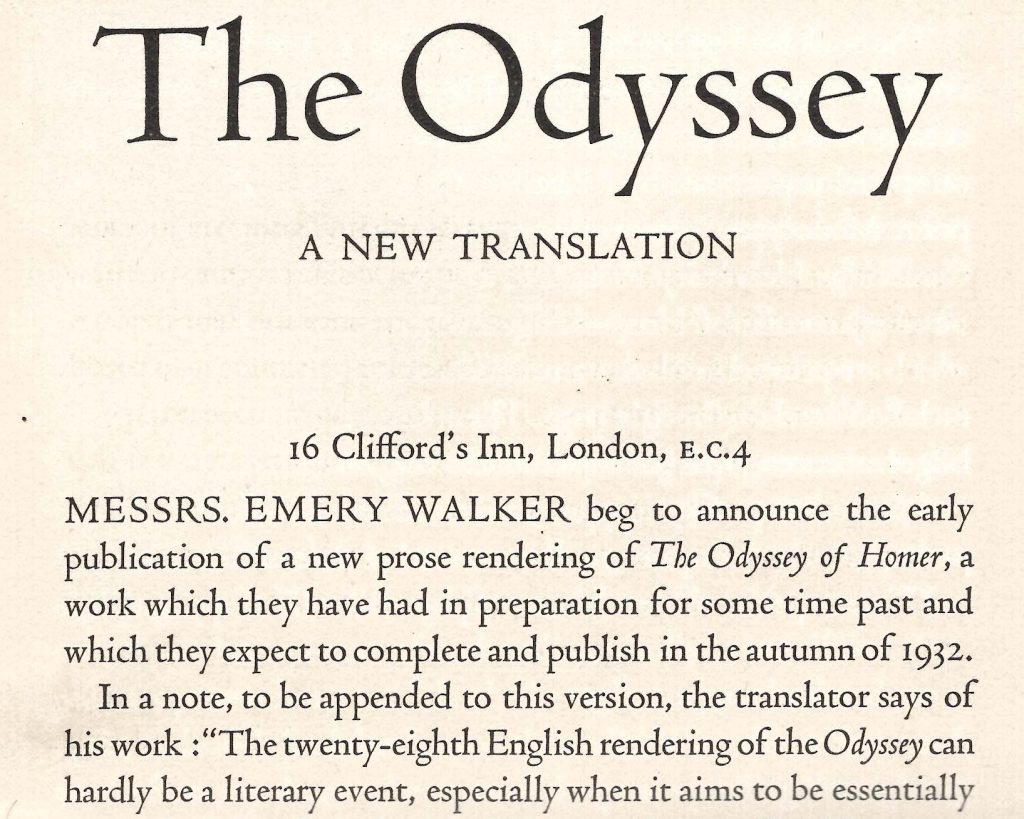
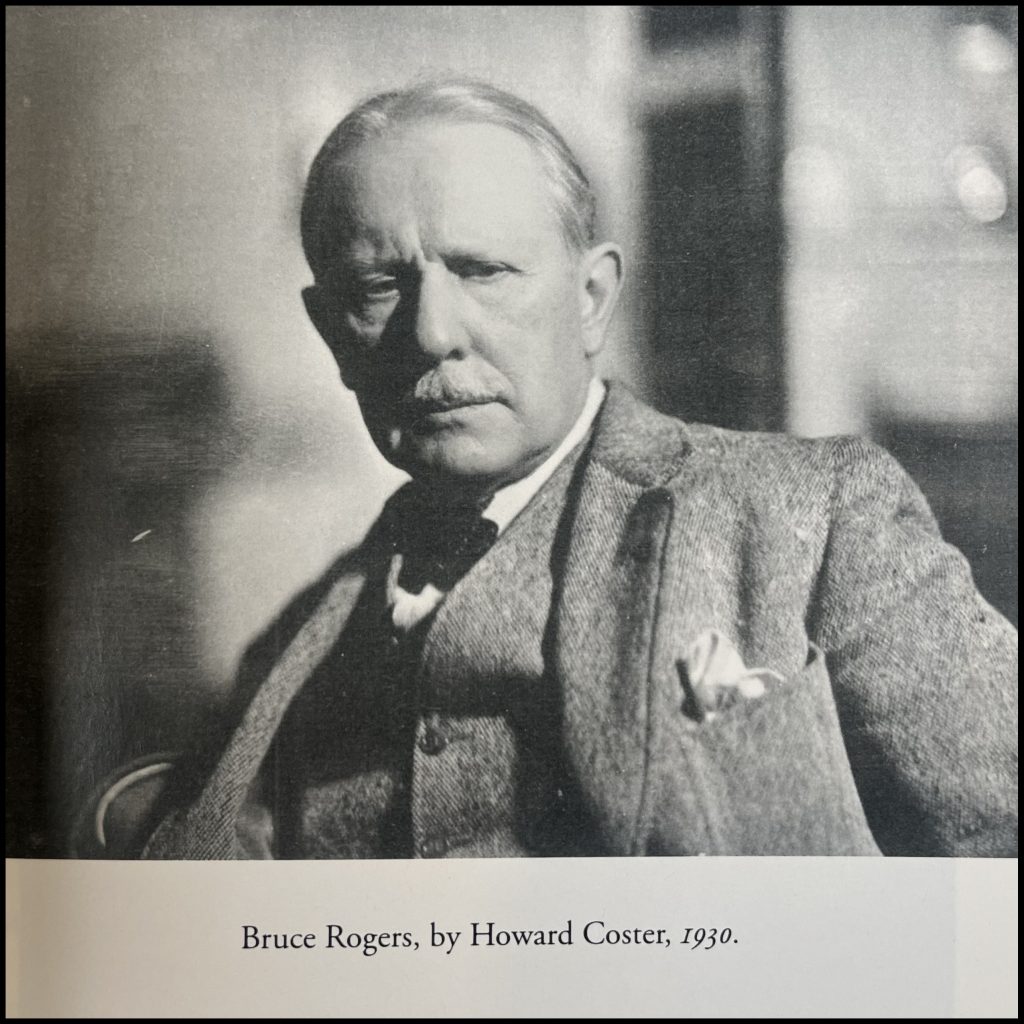
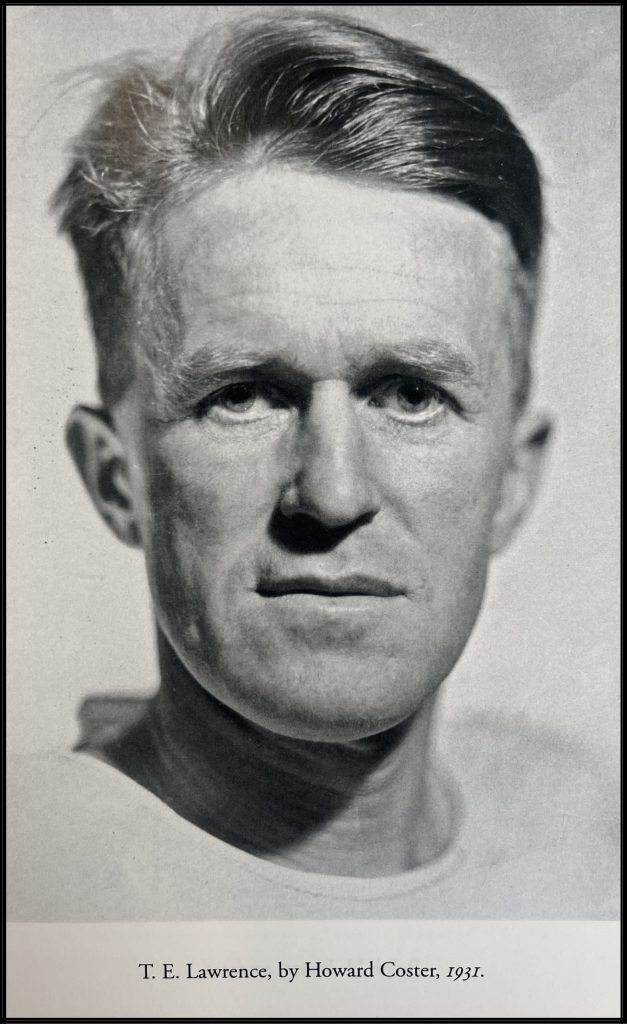
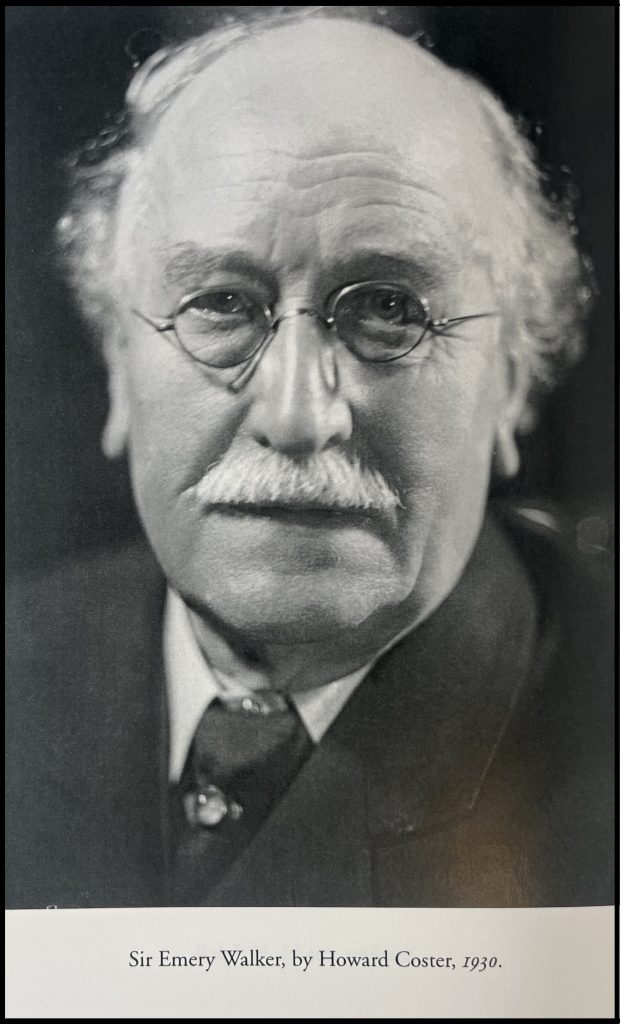
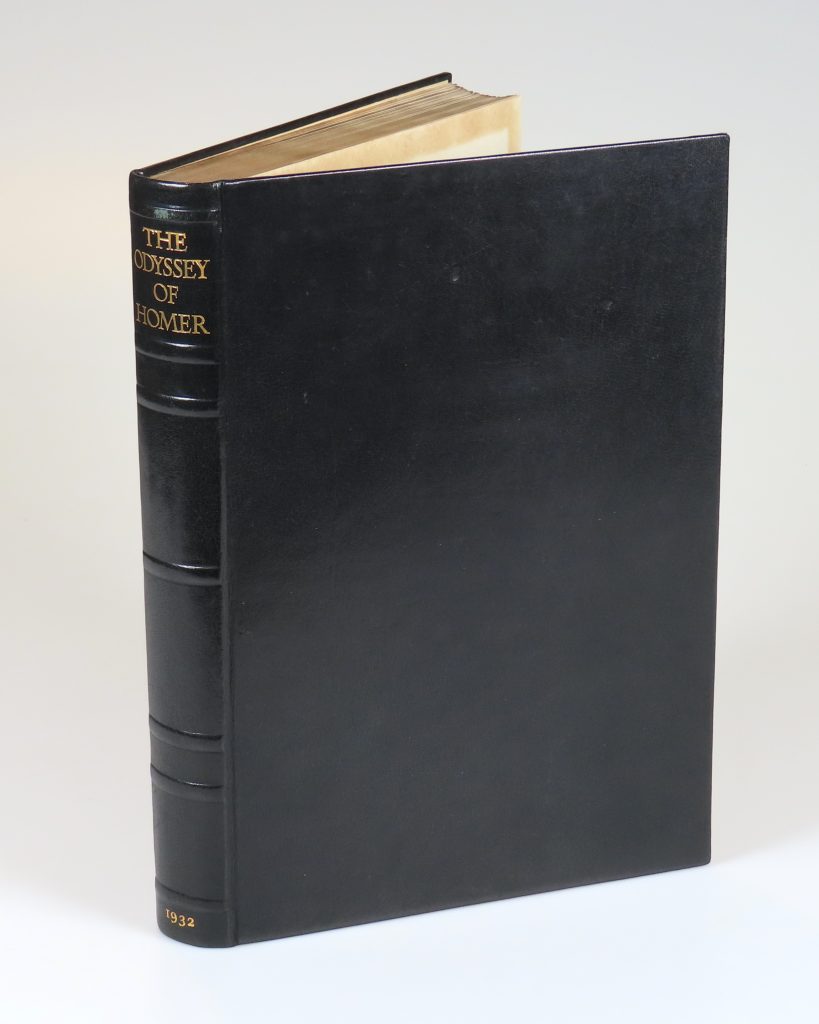
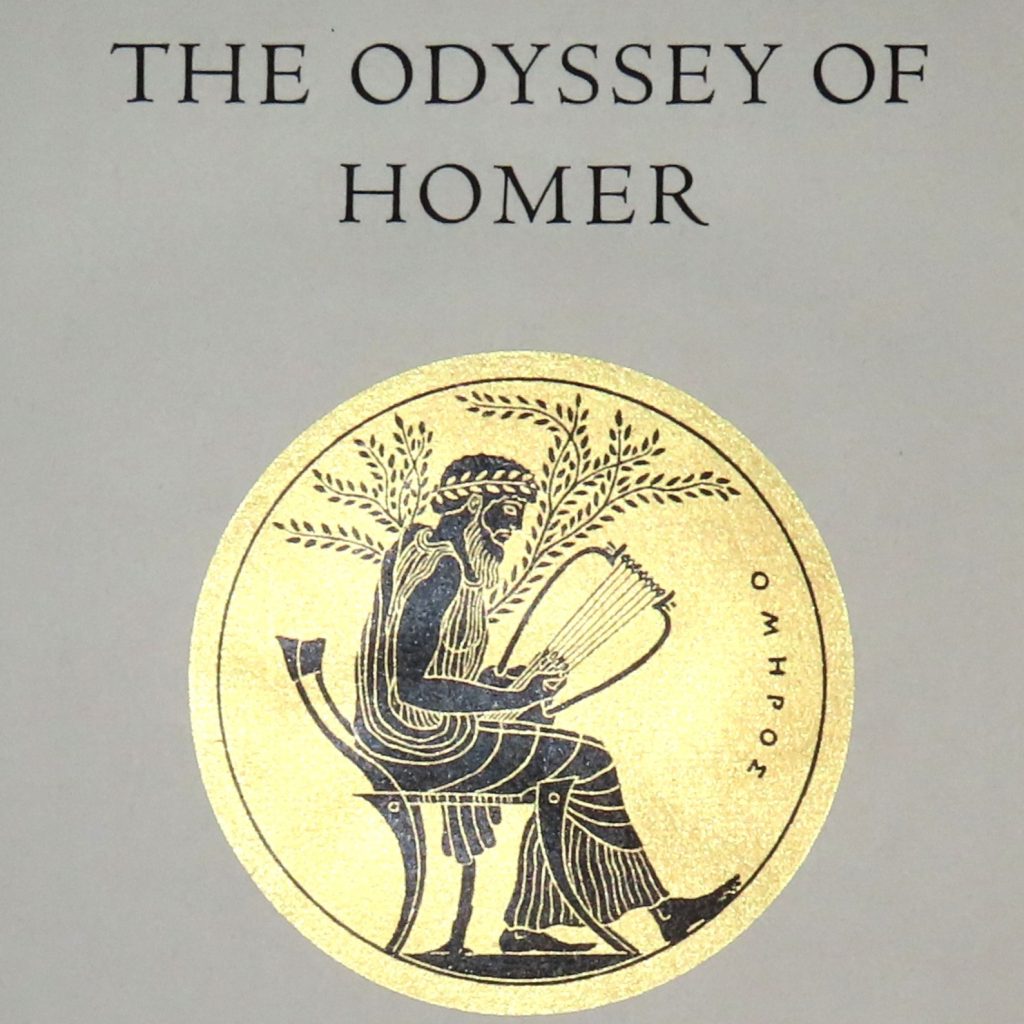
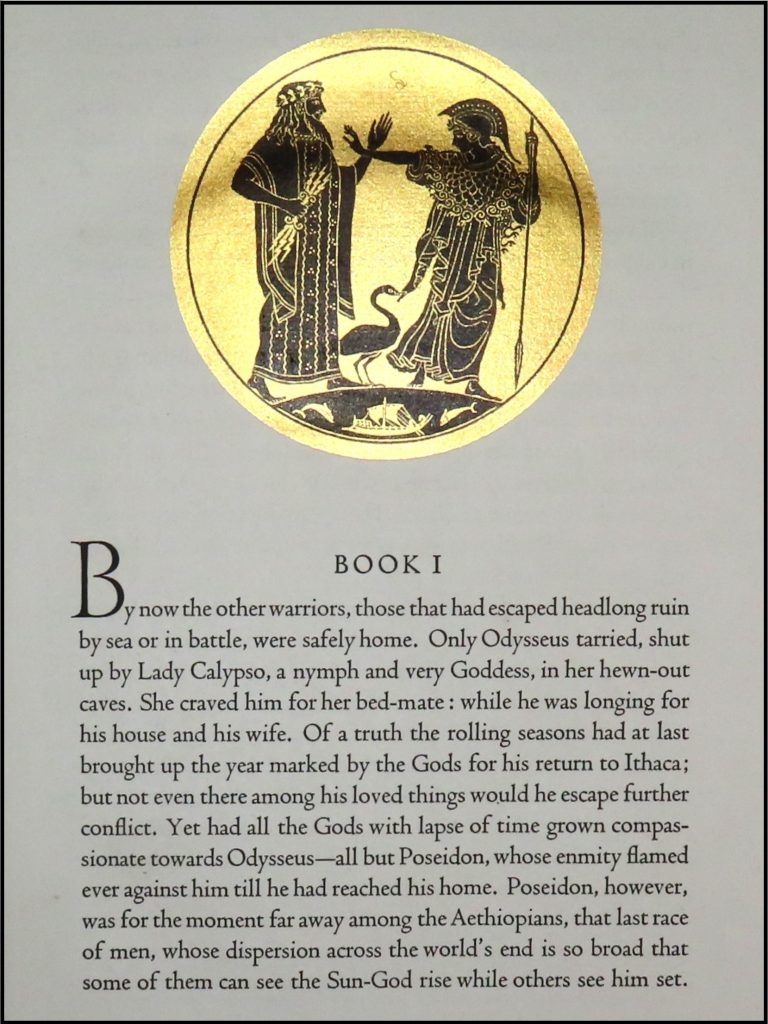
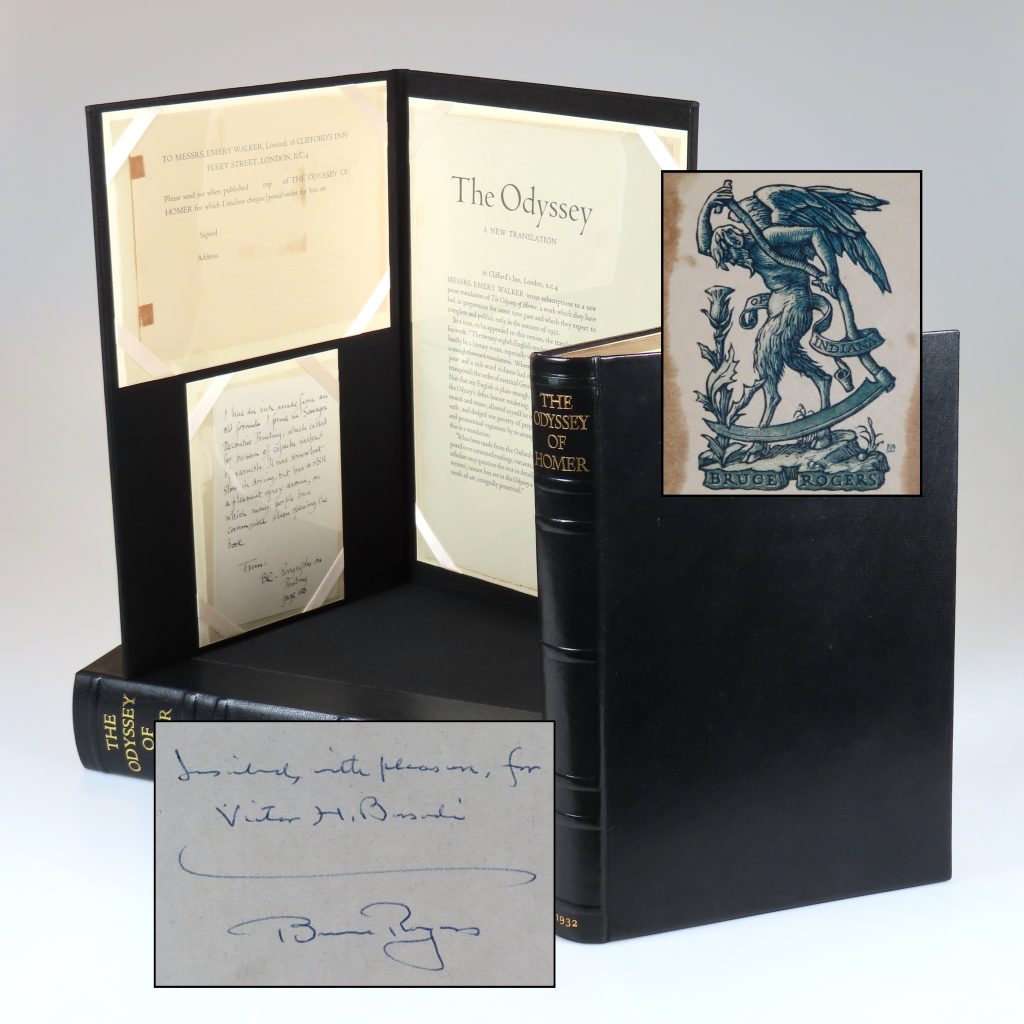
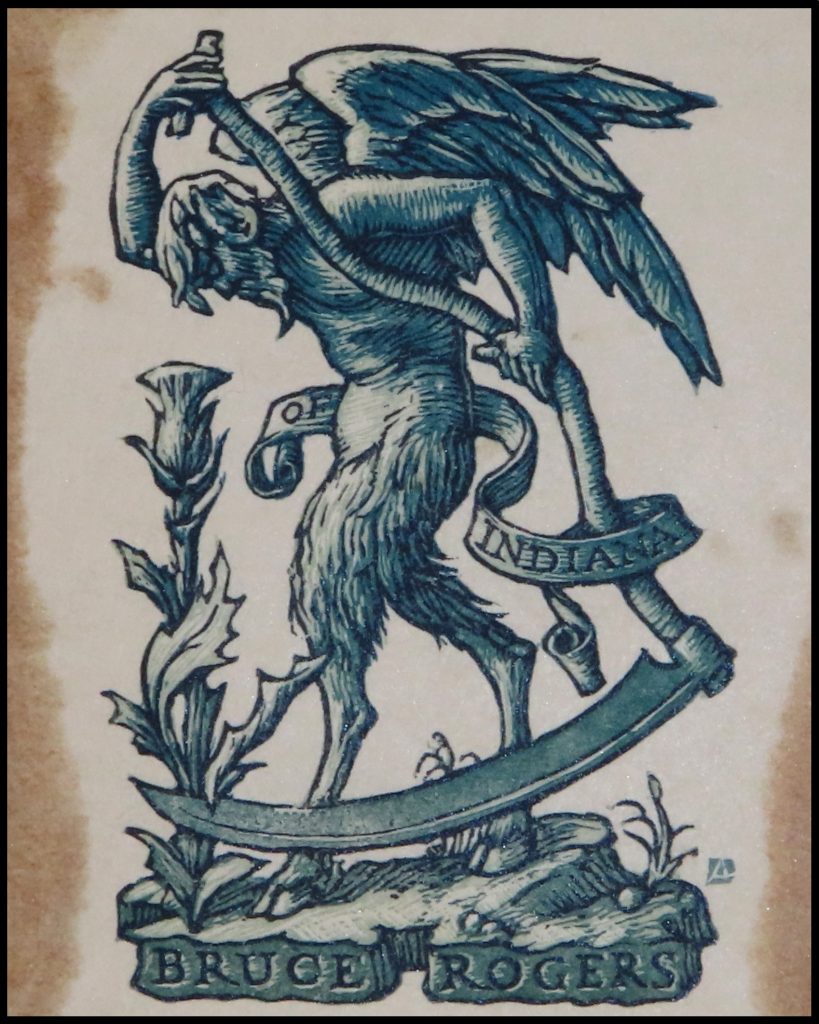
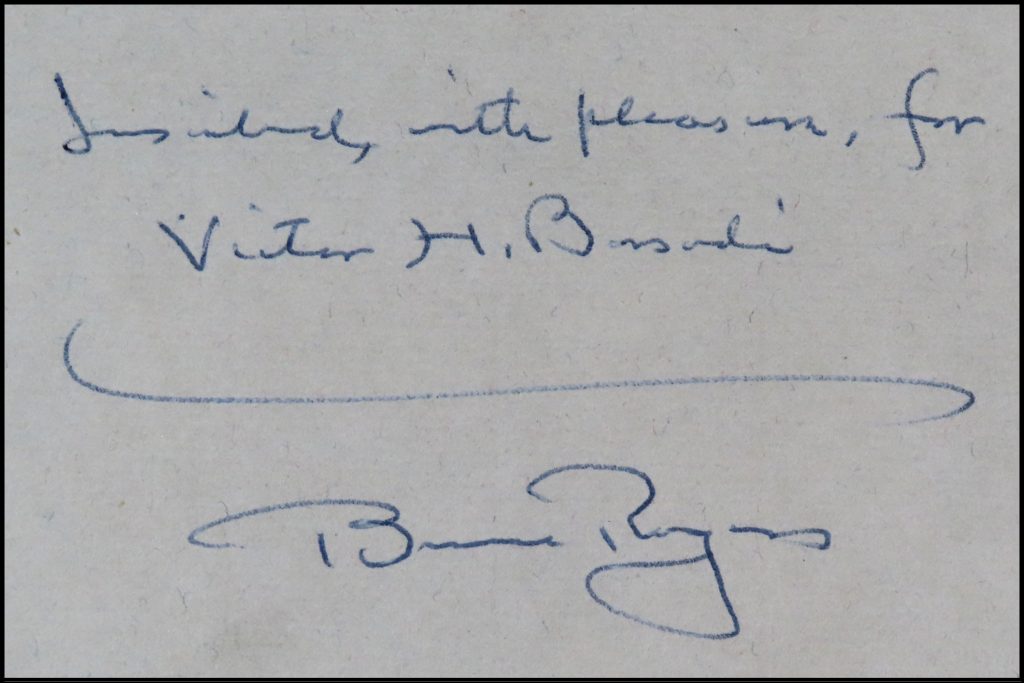
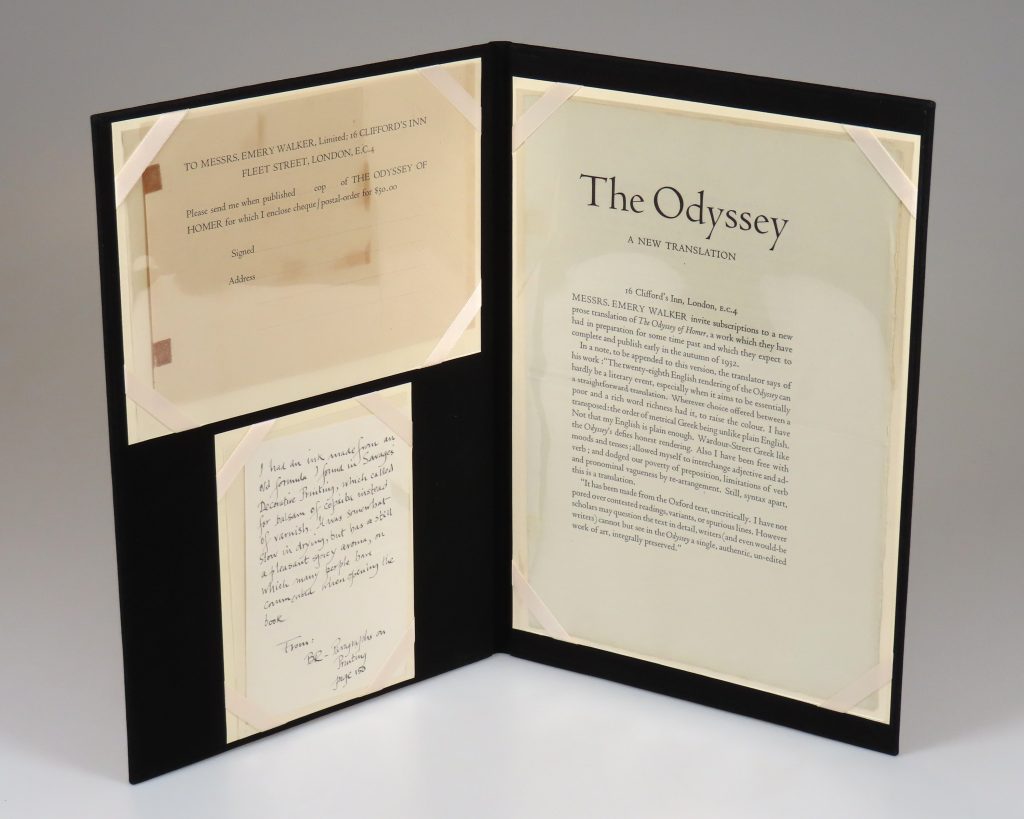
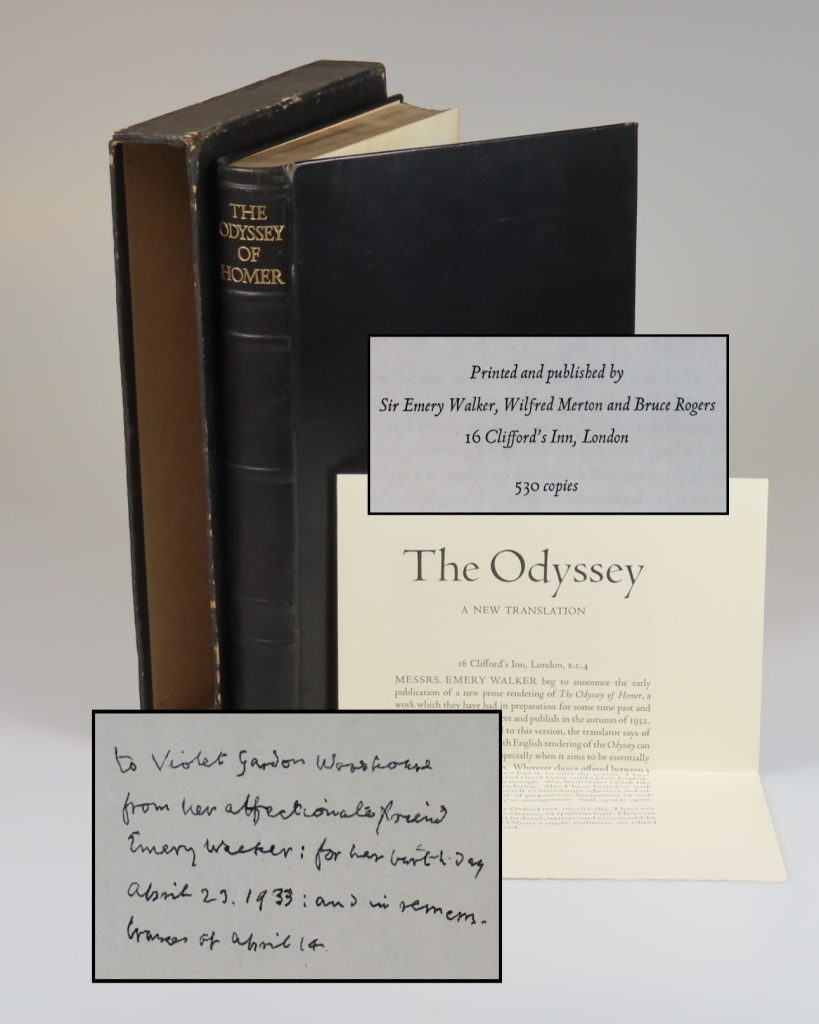
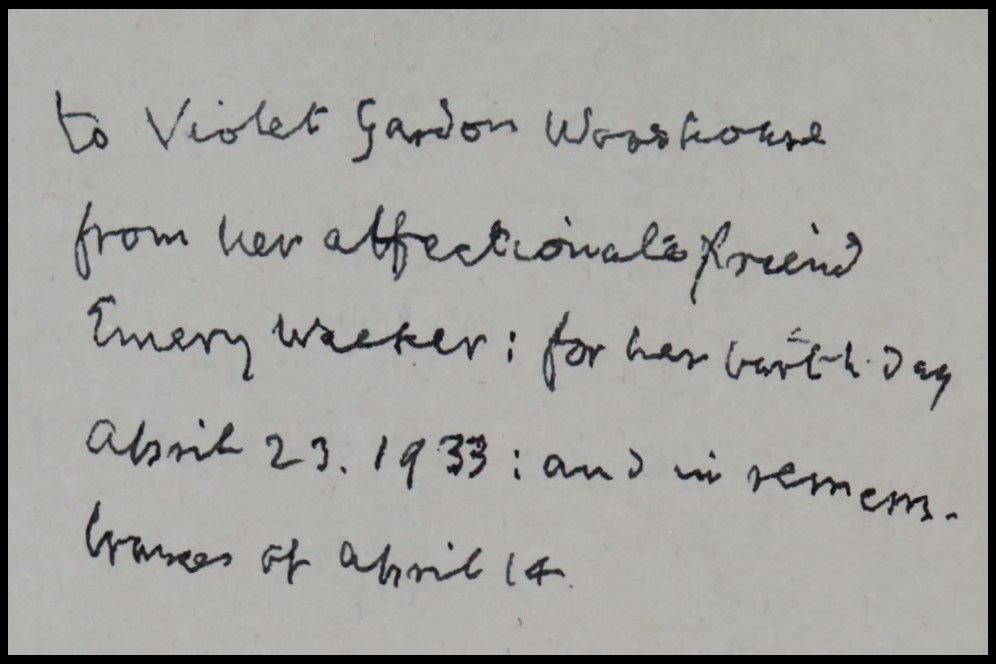
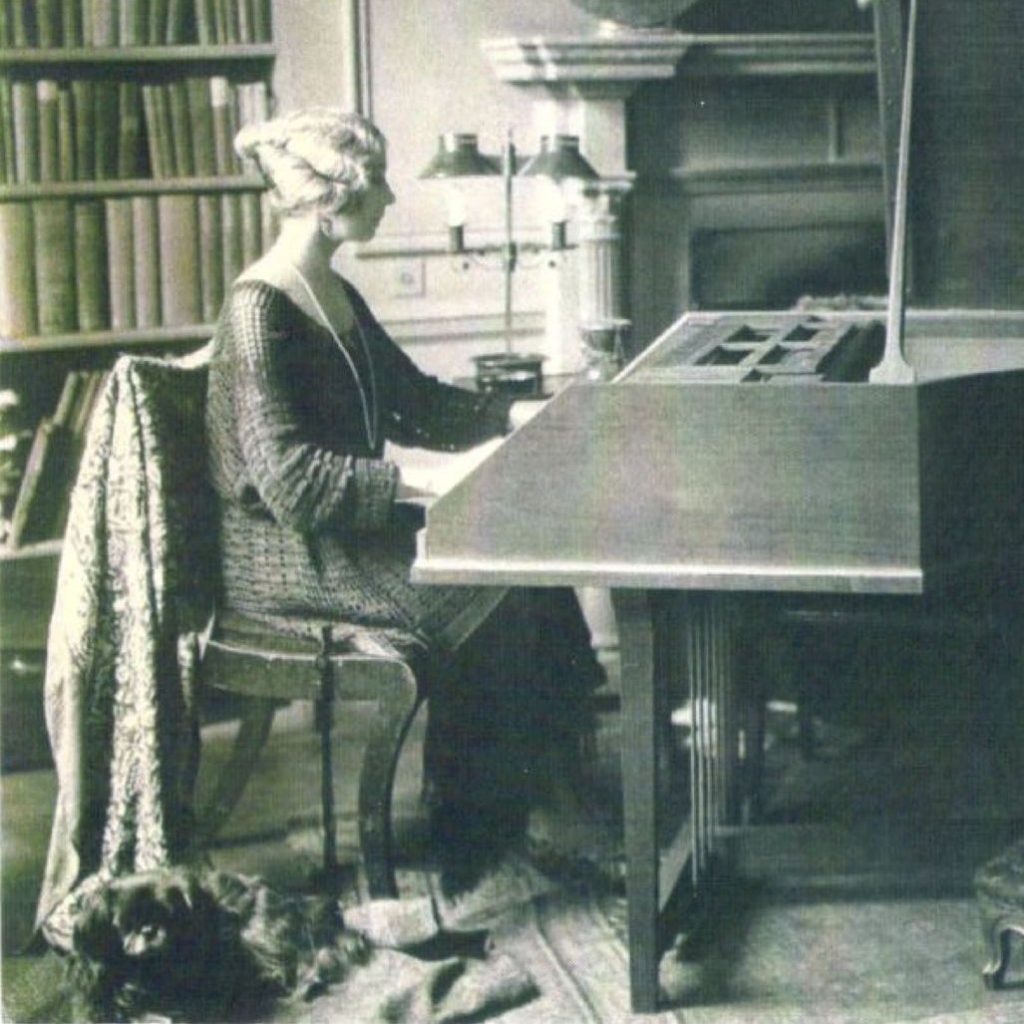

One thought on “It’s raining… Odysseys”